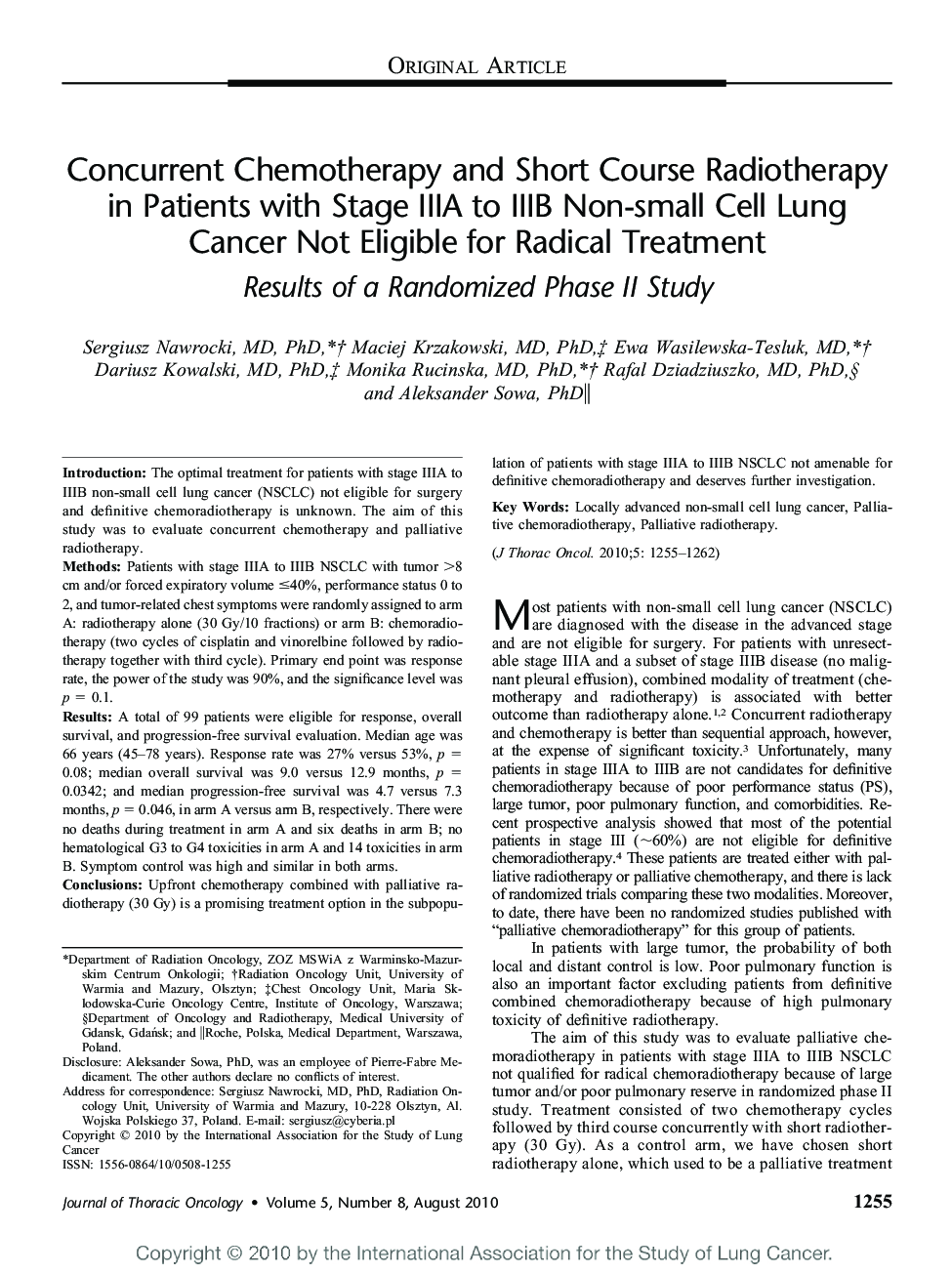| Article ID | Journal | Published Year | Pages | File Type |
|---|---|---|---|---|
| 3991829 | Journal of Thoracic Oncology | 2010 | 8 Pages |
IntroductionThe optimal treatment for patients with stage IIIA to IIIB non-small cell lung cancer (NSCLC) not eligible for surgery and definitive chemoradiotherapy is unknown. The aim of this study was to evaluate concurrent chemotherapy and palliative radiotherapy.MethodsPatients with stage IIIA to IIIB NSCLC with tumor >8 cm and/or forced expiratory volume ≤40%, performance status 0 to 2, and tumor-related chest symptoms were randomly assigned to arm A: radiotherapy alone (30 Gy/10 fractions) or arm B: chemoradiotherapy (two cycles of cisplatin and vinorelbine followed by radiotherapy together with third cycle). Primary end point was response rate, the power of the study was 90%, and the significance level was p = 0.1.ResultsA total of 99 patients were eligible for response, overall survival, and progression-free survival evaluation. Median age was 66 years (45–78 years). Response rate was 27% versus 53%, p = 0.08; median overall survival was 9.0 versus 12.9 months, p = 0.0342; and median progression-free survival was 4.7 versus 7.3 months, p = 0.046, in arm A versus arm B, respectively. There were no deaths during treatment in arm A and six deaths in arm B; no hematological G3 to G4 toxicities in arm A and 14 toxicities in arm B. Symptom control was high and similar in both arms.ConclusionsUpfront chemotherapy combined with palliative radiotherapy (30 Gy) is a promising treatment option in the subpopulation of patients with stage IIIA to IIIB NSCLC not amenable for definitive chemoradiotherapy and deserves further investigation.
